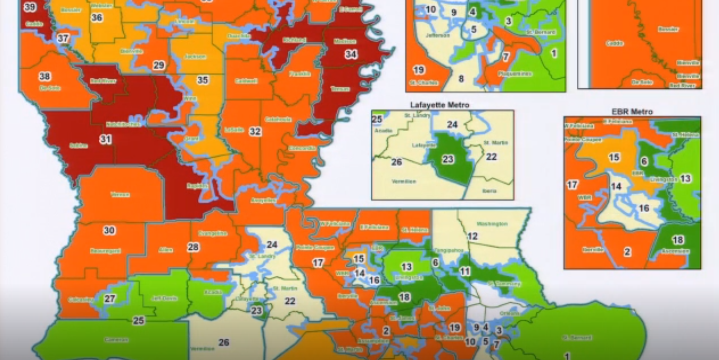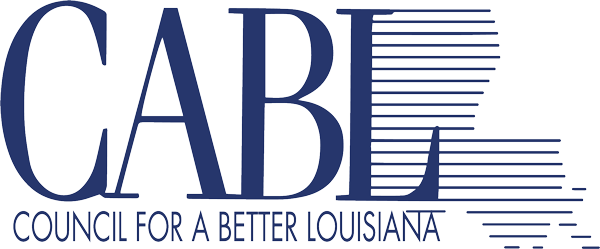
The new year brings with it a lot of activity on the political scene. One of the first things out of the chute will be a special session to redraw a host of political districts in Louisiana. It happens every ten years and it’s a process citizens should pay attention to.
On the one hand, redrawing political boundaries sounds somewhat on the boring side, but the truth is it is hugely important. Political districts, except for the courts, are required to be roughly equal in terms of population, so when the new census numbers become available every ten years, the Legislature and various local governments must redraw their district maps to reflect the shifts in population.
The Legislature will tackle its part of that in a special session slated to run from February 1-20. They’ll be looking at new maps for Congressional districts, the state House and Senate, BESE, the Public Service Commission, and the Louisiana Supreme Court.
In looking at the big picture, there are a couple of things to keep in mind. One is that while Louisiana’s population grew only about 2.7%, the population within the state shifted. Generally speaking, north Louisiana and many rural areas lost population, while the urban and suburban areas in the southern part of the state saw the most growth.
What that means broadly is that for offices where there a few large geographical districts like Congress, they will likely push further south. For the Legislature, where there are many more districts, northern areas will lose seats and areas around several south Louisiana communities will gain some.
The other thing to think about is that both the U.S. constitution and the Legislature have established certain basic requirements for redistricting.
Besides the need to have districts with close to the same population, the Legislature has recognized several key principles for redistricting: the need for contiguous geography, respect for recognized political boundaries such as parishes or municipalities, consideration of existing district alignments, the natural geography of the state, and preservation of communities of interest.
How all of those will come together remains to be seen.
At this point, lawmakers have travelled across the state doing redistricting “road shows” designed to explain the process and get public input. It is CABL’s hope that lawmakers will take their responsibility seriously, listen to the concerns of citizens, and draw maps that are truly reflective of the people of the state. As the saying goes, “citizens should pick their representatives rather than the politicians picking their voters.”
The truth of the matter, however, is that redistricting is an inherently political process, the political and partisan nature of which has essentially been sanctioned by the U.S. Supreme Court. Human nature tells us that politicians, just like people in general, tend to favor their own interests. And if getting re-elected is a primary interest, one can expect to see districts that ensure to the degree possible that incumbents will get re-elected.
Such is the nature of the process, but we still believe citizens can make a difference. Today, thanks to free technology anyone can draw their own district maps. You can see how some citizens have envisioned various Louisiana districts here and learn how to draw your own districts with the free web tool at Dave’s Redistricting.
At the end of the day, redistricting is an “inside baseball” process. The legislators are the ones on the field playing the game, but citizens can be more than just spectators. One way to do that is for all of us to make clear that drawing new districts is about reflecting the people of the state, not the personal desires of politicians. It’s about providing fair and meaningful representation for everyone because we are all citizens and should all have a voice.
To the credit of lawmakers, the process so far has been open and transparent and involved many groups of stakeholders. The hope is that spirit will continue, and Louisiana will be one of the states that rises above the overtly partisan maps we are seeing in some states and creates districts that are truly representative of the people of our state.
